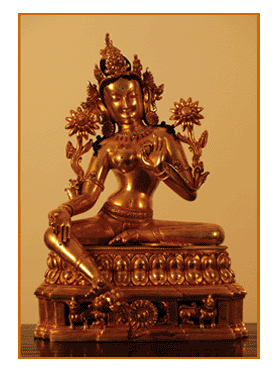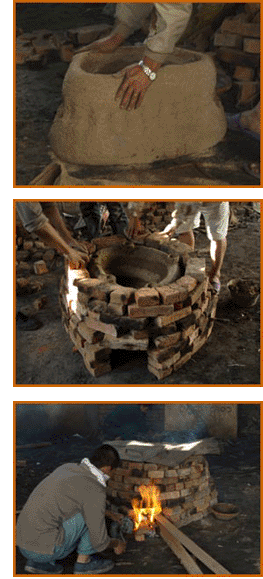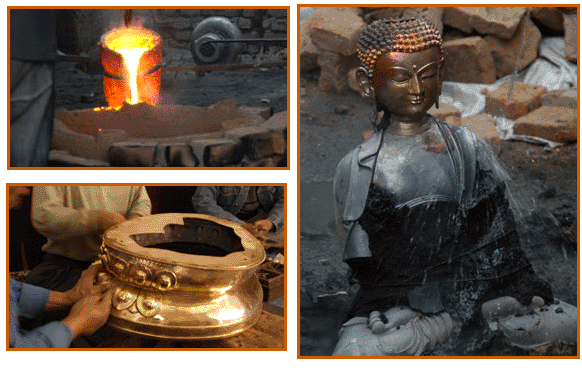Metal Crafts |
 My Life with Crafts
My Life with Crafts
Maitree Ratna Shakya
Art Director & Manufacturer
To my knowledge, my great grandfather and grandfather, Man Jyoti Shakya and Dharma Raj Shakya respectively, were artists, and they mostly created metal Buddhist figures in repose. They also designed and crafted gold and silver jewelry. Similarly, my father, Sangha Ranta Shakya, was also an artist who started with jewelry. To expand his skills, he traveled to Tibet around the age of 18 and spent a few years working as a jewelry craftsman. The Chinese occupation in Tibet forced him to return to Nepal, where he later began working on copper statues using the lost-wax process of casting. My father also hand-carved some statues and even gold-plated them himself. He then took his products to the local market.
 The growing demand for my father's sculpture required him to train others in his craft to work alongside him. At that time, I was around 7 or 8 years of age. My father and my grandfather inspired me to learn the techniques of carving statues and making the tools that are required for the process. It is important to note that we still make all the tools used in carving our statues today. Since my father was very occupied in the manufacturing process, I felt
The growing demand for my father's sculpture required him to train others in his craft to work alongside him. At that time, I was around 7 or 8 years of age. My father and my grandfather inspired me to learn the techniques of carving statues and making the tools that are required for the process. It is important to note that we still make all the tools used in carving our statues today. Since my father was very occupied in the manufacturing process, I felt
the need to support him and our family heritage by monitoring the production line and marketing.
At the age of 20, while my father oversaw manufacturing and the local market, I began to travel to merchandise our products overseas. This gave me the opportunity to study the art of different Asian cultures and enable me to incorporate this knowledge in order to improve the quality of our own products. We put our best knowledge and efforts into each sculpture we produce, to make it a work of art rather than simply a piece of merchandise. This has helped us to attain customer appreciation and further spread our craftwork.
I feel that throughout the history of Newari art, the present era marks a notable improvement in the quality of our craftsmanship. In fact, this could possibly be a remarkable period in the history of our art. However, since successive generations have given more emphasis to higher education, some students have less time to devote themselves to learning about art and its making. I feel that this may lead to a generation gap, incrementally affecting the quality of Newari art. With this in mind, I feel it is of the utmost importance to preserve our crafts by creating a source of inspiration for the next generation.
